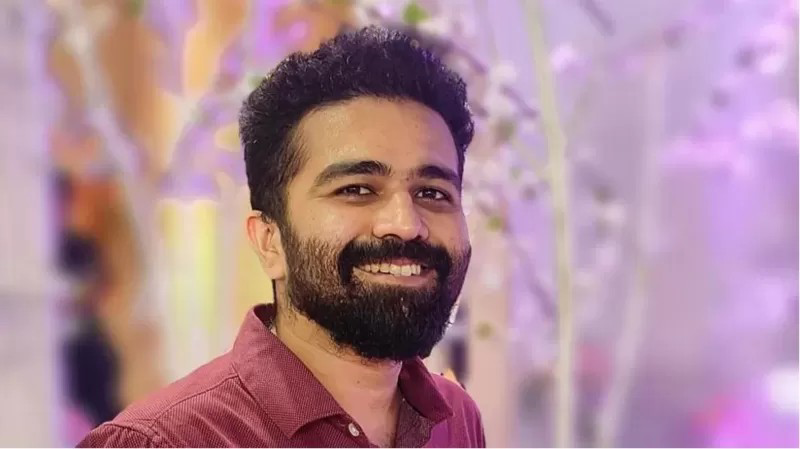There were reports of protests against the appointment of a Sanskrit professor from Banaras Hindu University. It was said that the reason for this protest is that this professor is a Muslim.
Firoz Khan learned Sanskrit from his childhood following the tradition of his grandfather Ghafoor Khan and his father Ramzan Khan. In an interview with a newspaper, Feroze said that when his grandfather used to sing bhajans in Sanskrit, hundreds of people would start dancing.
Feroze Khan's father used to speak in Goshala in Bagru village of Jaipur. The Sanskrit school Feroze attended in his village before coming to the Jaipur Sanskrit Institute is next to a mosque and still has many Muslim students. The beauty of India is highlighted by such examples.
Anyway, the language came into existence before any religion or sect. But it is also a fact that over time many languages became associated with specific sects or groups.
The reason for this may also be that religious scriptures were also written in the same language used by the preachers or respected persons of these religions in the specific area in which the development of different sects took place and those languages are important for the cultural identity of these communities. Became a part.
The language of a community or sect
Perhaps that is why there has been a tendency to associate Arabic-Persian with Islam. Similarly, the Pali and Prakrit languages became the hallmark of Buddhism and Jainism, and Punjabi, written in Garmikhi, came to be considered associated with the Sikh community. But the blame goes neither to these languages nor to our ancestors.
This is the fault of those who run sects in his name and the followers of the later generation, who strongly associated it with the language.
As far as the development of languages in India is concerned, the Hindi that we speak today, or Indian, originated from the standing dialect, with Sanskrit and Arabic-Persian also having a great contribution. From Muslim rulers to Amir Khusrau, Sufi poets and saint Mahatmas and poets of the Bhakti period also never accepted this prejudice on religious grounds.
There may be some exceptions. But generally, everyone openly learns and adopts all languages. Religious scriptures were also translated from one language to another.
Renowned Hindi poet Ramdhari Singh 'Dankar' in his famous book 'Sanskriti Ke Char Adhyaya' i.e. Four Chapters of Civilization has presented some interesting examples of Shlokas (sayings) mentioned in Arabic Tajik scriptures. In Arabic and Sanskrit are written together. E.g.- 'Siddhakabala, Ashraf Yoga, Khalasaram Radh Muthuduphalya, Katham Taduthothothadirnama' etc. India's great linguist Dr. Suniti Kumar Chatterjee has written that 'By the end of the 16th century, all Indian Muslims had come to regard Persian as a foreign language and had fully embraced the desi or local languages.
Aurangzeb's love for Sanskrit
Dinkar writes that in terms of colloquialism, the Muslim rulers were also interested in Sanskrit words because Sanskrit words were more understood in that country. An interesting incident related to him is that once Aurangzeb's son Muhammad Azam Shah sent him some mangoes and requested him to name them. So Aurangzeb named it 'Sidharas' and 'Rasnavalas'.
Probably from the time of Amir Khusrau (1253 - 1325), the trend of combining both languages to create poems like Khichdi was seen. Many times he said one stanza of his poem in Persian and another in Burj Bhasha and sometimes he said one part of one stanza in Persian and the other in his native language like his famous poem:
Zahal Maskin Makan Tagafil, Durai Nyan made lights
That I don't want to move, O soul, I don't take umbrellas
But when Rahim (Abdul Rahim Khan-e-Khanan 1556 - 1627) came to compose this type of khichdi, he started mixing Sanskrit with the dialect.
Rahim's Hindi couplets became very popular but he was a great scholar of Sanskrit. Apart from creating pure Sanskrit poems in praise of Lord Krishna of the Hindus, he wrote two books in Sanskrit on the astrology of the Vedic period, the first being 'Khet Kotukum', and the second being 'Dvantarshdevagavali'.
In this mixed language of that era, the eighteenth-century poet Naqeeb Bhakari Das wrote that in Braj language, everyone says poetry, but when Sanskrit and Persian meet, it is funny.
But for a long time, Sanskrit scholars have been anxious to preserve its purity and superiority, and perhaps for that reason, there has been an attempt to confine it to a certain class.
First the Dalits (backward class of Hindus) and then later the Muslims tried to keep away from it. Therefore, his relationship with the larger society was severed and with the changing times, he could not develop sufficiently.
And perhaps that is why Kabir, the famous Sadhu poet of his time, said that 'Sanskrit is stagnant well water, while Bakha is flowing water.'
What did Kabir say about Sanskrit?
Tulsidas, who was a great scholar of Sanskrit, did not avoid Arabic and Persian words and therefore Bhakaridas praised Tulsi and Kui Gang and wrote that they had the flavor of a different language in their time.
Another famous poet Riskhan (real name- Syed Ibrahim Khan) was a Pathan and was a disciple of Vithal Nath, son of Valbhacharya, a preacher of the Vallabh sect who followed the path of righteousness.
Riskhan's devotion to Lord Krishna is well known and he spent a long time of his life in Mathura and Vrindavan. He is also said to have been a Sanskrit scholar and translated the Bhagavad Gita into Persian.
It is also said that in reference to Muslim devotees like Ruskhan, the famous Hindi poet Bharathindu Harishchandra said that 'those Muslim Harijans should be stabbed by high caste Hindus'.
Nazrul Islam and Hindu Gods
After Rabindranath Thakur (Tagore), the name most familiar to Hindi-speaking Bengali today is undoubtedly Qazi Nazrul Islam. Eminent critic Ram Vilas Sharma has written that nowhere in his literary work did Nazrul Islam compromise his Muslim identity, but he chose symbols from all the religious stories of Hindus, Muslims, and Christians, and most of all from Hindu stories. .
Mahatma Gandhi, who is called the Father of the Nation of India, also strongly supported the study and teaching of Sanskrit by Dalits and Muslims in India. In his presidential address to the National Council of Education at Gurukul Kangri in Haridwar on 20 March 1927, Gandhiji specifically emphasized that learning Sanskrit was the duty not only of the Hindus of India but also of the Muslims. On September 7, 1927, he repeated the same in his speech at Pachaipa College, Madras.

























































